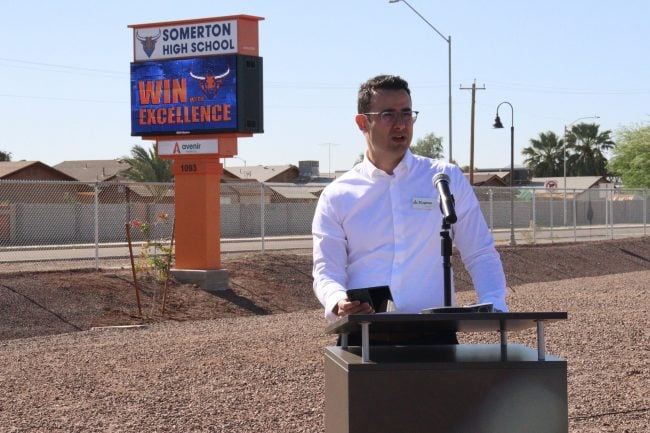Can money motivate credit unions to up their ante foradvocacy?
|The Cornerstone Credit Union League, which launched a monetaryreward engagement program last year, is trying to answer to thatquestion.
|“Ensuring that we always provide a high level of member benefitsand services to Cornerstone credit unions and ensuring they utilizethem is an ongoing charge from our Executive Vice President andChief Member Service Officer Karen Hart,” Cornerstone SVP of CreditUnion Relations Michael A. Delker said.
|Hart's challenge inspired Cornerstone to develop its memberengagement program.
|The MEP was designed to make its 534 affiliated credit unionsaware of their current engagement level, educate them about theleague's benefits and services and grow engagement levels byproviding an incentive for credit unions to use more services.
|“The whole idea was to communicate with them on an ongoing basisprecisely their engagement level,” Delker said. “But the key tothat is education, informing them of the various ways in which theyearn points. There may be some services credit unions are simplynot aware of or were not participating in. By utilizing thisprogram they learn how easy it is to become engaged in all of thosevarious areas we’re measuring.”
|Credit unions in Arkansas, Oklahoma and Texas earn points forparticipating in league and CUNA programs, events and activities in20 different areas under five categories of advocacy,regulatory/compliance, education/training, initiatives/outreach andproducts/services.
|For example, a credit union can earn one point for registeringone person to attend a major conference and up to five points forregistering more employees from the credit union for theconference.
|Credit unions with point totals in the top 20% in each assetcategory then receive a $500 credit that can be used the followingyear toward league dues or new services. Credit unions also candonate the $500 to the Cornerstone Credit Union Foundation.
|“The $500, obviously, to a large credit union is not going tomake a significant difference,” Delker said. “Certainly, $500 for asmall credit union is not an insignificant amount. We’ve heard lotsof comments from small and midsize credit unions that theyappreciate the opportunity to use that $500 toward their dues oranother service.”
|Although Delker said the Cornerstone league has always had avery high level of engagement from credit union members, heconceded there is always room for improvement.
|“As 2015 progressed, we did see more credit unions takingadvantage of more benefits of their Cornerstone membership,” Delkersaid. “At the end of 2015, we established an engagement benchmark,and at the end of this year we will be able to see exactly howcurrent engagement levels compare to year-end 2015 levels.Hopefully, we will have more credit unions at the end of 2016 thatincrease their point totals over what they have in 2015. And ifthat's the case, then we know we’re moving the needle on memberengagements.”
|In January, the Credit Union Association of the Dakotas mimickedCornerstone's program in the hopes it would increase engagementfrom its 78 affiliated credit unions.
|Jeff Olson, president/CEO of the Dakotas association, said heis hoping his organization's newly launched reward program willalso help move the member engagement needle.
|Even though the overall engagement of the Dakotas association'scredit unions is strong in many respects, some areas of engagementneed improvement, he said.
|“We’ve had a very poor response on CUNA's project zip code,”Olson said. “I think we had one member that was doing it. But wedidn't push it. We didn't ask members to get involved with it, butwe think it is a great program that we’ll see benefits from.”
|The league has also had challenges with attendance at someconferences and chapter meetings, and making credit unions aware ofsome programs that need their involvement.
||Olson said he believes the rewards-based member engagementprogram may motivate credit unions to step up their participationin league and CUNA events.
|“I think it's an effort that we put forth with the board'ssupport and blessing to offer our members by saying, ‘Hey, we havesome great programs. We appreciate your continued support and wewant to give you the opportunity that by staying engaged and bygetting more people involved you can save your credit union somemoney,’” he said.
|Credit unions in North Dakota and South Dakota can receivereward points by participating in CUNA and association activitiessuch as Project Zip Code, CUNA's member activation program,CULAC/CUPAC, voter voice, CU Social Good, chapter involvement,attendance at compliance/regulatory seminars and conferences,association newsletter subscriptions, attendance at annual summitmeetings, GAC meetings and Hike the Hill events.
|Based on the number of points they amass, credit unions can earn$500. Like Cornerstone's program, the credit union can apply thosefunds toward league dues or conference or education seminar costs,as well as the association's foundation or GAC scholarships.
|While it's unknown whether the programs will improve memberengagement, they are attracting attention from other leagueCEOs.
|Patrick LaPine, president/CEO of the League of Southeastern Credit Unions, said he is intrigued bythe reward member engagement program and plans to develop a similarprogram for Florida and Alabama credit unions.
|“I think it's a great idea,” LaPine said. “I’m looking at moredata on it to understand what can be achieved, how to track it andhow to reward. It's on our to-do list for the year.”
|But LaPine said because every league is different, he doubted arewards-based membership program will become a trend. For leaguesthat already have a high level of engagement, a rewards programwouldn't be needed, he noted.
|For example, the Northwest Credit Union Association, like other trade groups,boasts a high level of engagement from its credit unionmembers.
|“We have a saying here internally that engagement is everybody'sjob 100% of the time,” Northwest Credit Union AssociationPresident/CEO Troy Stang said. “We look at engagement in a livesetting on a regular basis.”
|For example, association staff members have reached out tocredit unions to encourage them to become key advocacy contacts fortheir local elected officials.
|“We strive to ensure that there's a credit union professionalassigned to those discussions with those elected officials, and welike to make sure that's done in a credit union setting or in thecommunity that the credit union services,” he explained.
|He noted that advocacy is extremely progressive in the Northwestbecause 50% of Washington and Oregon residents are members of acredit union.
|“The consumer is choosing a credit union because of therelevancy and value cooperatives produce, and those cooperativesare choosing to operate under a state charter in many cases becausethe state charter allows for better relevancy and easier operationsthan a federal charter,” he said.
|Last year, the Northwest association recorded 7,300 touchpointsor engagement in advocacy, community awareness and programactivities with its 160 credit unions in both states.
|“I think our members of the association are more engaged becausethey get that we produce strong advocacy, which leads to strongresults and a better operating environment,” Stang said. “Wecouldn't do that if our members weren't engaged in ourprogramming.”
Complete your profile to continue reading and get FREE access to CUTimes.com, part of your ALM digital membership.
Your access to unlimited CUTimes.com content isn’t changing.
Once you are an ALM digital member, you’ll receive:
- Critical CUTimes.com information including comprehensive product and service provider listings via the Marketplace Directory, CU Careers, resources from industry leaders, webcasts, and breaking news, analysis and more with our informative Newsletters.
- Exclusive discounts on ALM and CU Times events.
- Access to other award-winning ALM websites including Law.com and GlobeSt.com.
Already have an account? Sign In
© 2024 ALM Global, LLC, All Rights Reserved. Request academic re-use from www.copyright.com. All other uses, submit a request to [email protected]. For more information visit Asset & Logo Licensing.









